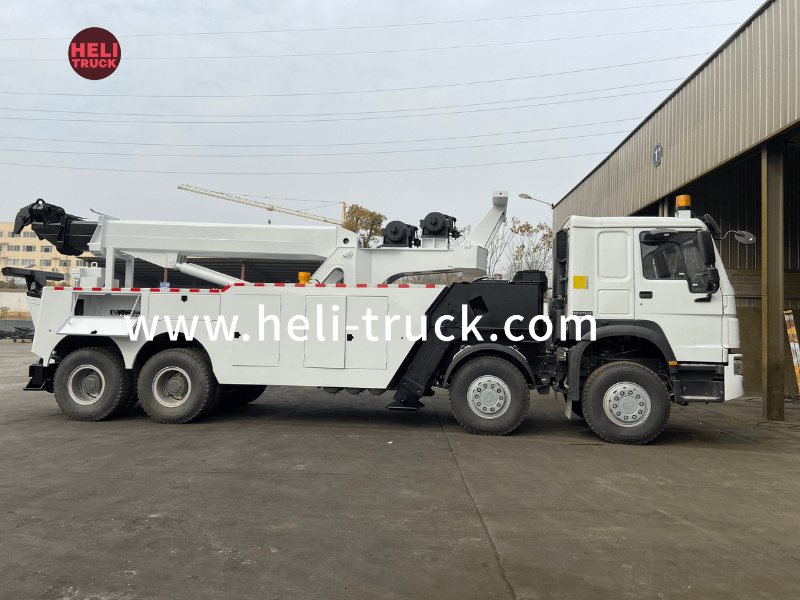Introduction
Garbage compactor trucks play a crucial role in waste management systems around the world. These specialized vehicles are designed to collect and compact waste materials efficiently, reducing the volume of trash and making it easier to transport and dispose of. In this comprehensive guide, we will explore the various features of garbage compactor trucks and their importance in keeping our communities clean and healthy.
1. Types of Garbage Compactor Trucks
There are several types of garbage compactor trucks available on the market, each designed for specific waste collection needs. The most common types include:
- Rear Loader Compactor Trucks: These trucks feature a compactor mechanism at the rear of the vehicle, making them ideal for collecting residential and commercial waste bins. The compactor compresses the waste as it is loaded into the truck, maximizing the amount of trash that can be transported in each trip.

- Front Loader Compactor Trucks: Front loader compactor trucks are commonly used for collecting waste from commercial and industrial locations. These trucks have a hydraulic arm at the front that can lift and empty large dumpsters into the compactor, making them suitable for handling heavy loads.
- Side Loader Compactor Trucks: Side loader compactor trucks are equipped with a compactor mechanism on the side of the vehicle, allowing for efficient collection of waste from curbside bins. These trucks are commonly used in residential areas where bins are placed along the roadside for collection.
2. Compactor Mechanism
The compactor mechanism is the heart of a garbage compactor truck, responsible for compressing the waste materials to reduce their volume. The mechanism typically consists of a hydraulic ram or blade that pushes the waste into the compaction chamber, where it is crushed and compacted. The compactor mechanism is controlled by the truck operator, who can adjust the compaction pressure based on the type and volume of waste being collected.
3. Hydraulic System
Garbage compactor trucks rely on hydraulic systems to power the compactor mechanism and other functions of the vehicle. The hydraulic system consists of a hydraulic pump, hydraulic fluid reservoir, control valves, and hydraulic cylinders. The hydraulic pump is usually powered by the truck's engine and generates the hydraulic pressure needed to operate the compactor mechanism and other hydraulic components.
4. Compaction Ratio
The compaction ratio is a critical factor in determining the efficiency of a garbage compactor truck. It refers to the ratio of the original volume of waste to the volume of waste after compaction. A higher compaction ratio means that the truck can transport more waste in each trip, reducing the number of trips required to empty collection bins and saving time and fuel.
5. Capacity
The capacity of a garbage compactor truck refers to the volume of waste it can hold before needing to be emptied. The capacity is typically measured in cubic yards or cubic meters and can vary depending on the size and design of the truck. Larger trucks have higher capacities and are suitable for collecting waste from large commercial and industrial facilities, while smaller trucks are more suitable for residential waste collection.
6. Safety Features
Garbage compactor trucks are equipped with various safety features to protect the operator and ensure safe operation. https://www.heli-truck.com/refrigerated-truck-the-backbone-of-cold-chain-logistics/ include:
- Rearview Cameras: Rearview cameras are installed on the back of the truck to provide the operator with a clear view of the area behind the vehicle. This helps prevent accidents and injuries when backing up or maneuvering in tight spaces.
- Emergency Stop Button: An emergency stop button allows the operator to quickly stop the compactor mechanism in case of an emergency or malfunction. This feature helps prevent accidents and injuries by immediately halting the compaction process.
- Overload Protection: Overload protection systems are designed to prevent the compactor mechanism from being overloaded with waste. These systems can automatically adjust the compaction pressure or alert the operator when the truck is nearing its maximum capacity.
7. Automated Features
Modern garbage compactor trucks are equipped with automated features to improve efficiency and reduce manual labor. Some common automated features include:
- Automatic Bin Lifting: Front loader compactor trucks are equipped with hydraulic arms that can lift and empty large dumpsters into the compactor automatically. This feature eliminates the need for manual lifting and reduces the risk of injuries for the operator.
- GPS Tracking: GPS tracking systems are used to monitor the location and route of garbage compactor trucks in real-time. This allows waste management companies to optimize collection routes, track vehicle performance, and improve overall efficiency.
- Remote Control: Some garbage compactor trucks are equipped with remote control systems that allow the operator to control the compactor mechanism from a safe distance. This feature enhances safety and convenience, especially when working in hazardous or confined spaces.
8. Environmental Benefits
Garbage compactor trucks play a significant role in reducing the environmental impact of waste disposal. By compacting waste materials, these trucks help minimize the volume of trash sent to landfills, reducing the need for additional landfill space and lowering greenhouse gas emissions. Compact waste is also easier to transport, leading to fewer vehicle emissions and reduced fuel consumption.
9. Maintenance and Care
Proper maintenance and care are essential to ensure the optimal performance and longevity of garbage compactor trucks. Regular maintenance tasks include:
- Checking hydraulic fluid levels and changing the fluid as needed.
- Inspecting hydraulic hoses and connections for leaks or damage.
- Lubricating moving parts of the compactor mechanism to prevent wear and tear.
- Cleaning and sanitizing the compaction chamber to prevent odors and contamination.
Conclusion
Garbage compactor trucks are essential tools in modern waste management systems, helping to collect, compact, and transport waste materials efficiently. Understanding the key features of these trucks is crucial for waste management professionals to make informed decisions when selecting and operating garbage compactor trucks. By investing in high-quality trucks with advanced features, communities can improve waste collection efficiency, reduce environmental impact, and promote a cleaner and healthier environment for all.
